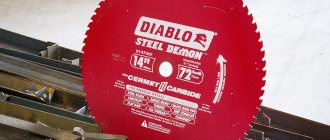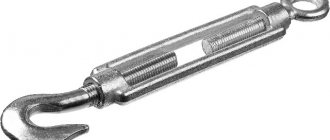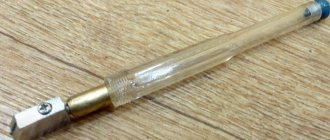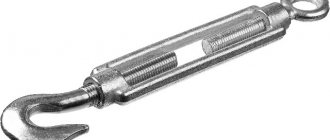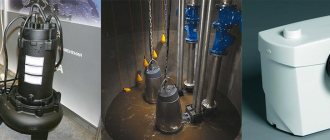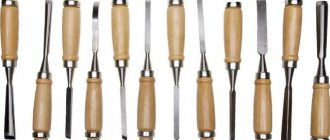The hard drive is one of the most amazing components of a modern computer. Just imagine that we still store data using magnetic-mechanical technology, which has been around since the 50s of the 20th century and has seen tube electronics and records. Imagine that we live in an alternate universe where the hard drive was never invented and all data is written to Flash memory or other solid state media. So what do you make of the proposal to store information as magnetized areas on a rotating disk, where the recording head can be precisely positioned on tracks spaced apart comparable in size to transistors created in integrated circuits using photolithography? Is it impossible, too difficult, unreliable and short-lived? No, this is a reality that we take for granted. An example of technology taken to an initially unpredictable, even absurd level.
Although HDD technology is based on simple principles, in order for it to reach such heights, it took decades of development and scientific research, a huge number of complex, non-trivial, sometimes ingenious and incredible solutions, about which little is known outside the circle of people professionally associated with production of hard drives. We talked with just such a person - you can ask him all the questions that come to mind about hard drive technologies that are used now and will be implemented in the future. Meet Alex Blackwell, Chief Engineer at Western Digital EMEA.
Blackwell often communicates with the computer press, but this is clearly not the case that would be approached by the official “I often have to communicate on duty.” It seems like he really enjoys telling people about technology. Alex speaks so enthusiastically and brightly that the two-hour interview with him flew by in one breath. This, in general, was not much like an interview. We didn’t have to “ask” anything from Alex, and in response to one question he gave much more interesting information than we initially expected to receive. The result was actually a full-length lecture about interesting and non-obvious facts regarding hard drives.
When compiling a list of questions, we tried to reduce platitudes from the category “how is WD doing now and what are its plans for the future?” and learn more about hard drives in general, without fear of seeming naive and ignorant in some way. Alex gladly allows his interlocutor to be a greedy “why” for knowledge.
Blackwell also has a very vivid speech, full of metaphors and humor. We will try to convey this in the text, making it as close as possible to the “unkempt” transcript. Nevertheless, since the conversation constantly revolved around the same questions, we will compose it this way - in the form of a summary of several main topics. No single plot, just a collection of fascinating stories about hard drives. All speech is from the perspective of Alex Blackwell, questions and comments by the author are in italics.
⇡#About head parking and built-in electric generator
3DNews: We recently learned that the hard drive uses an electrical generator so that it can complete writing a sector in the event of an emergency shutdown. Can you tell us more about this?
Alex Blackwell: When the power suddenly goes out, the first and most important thing for drive safety is to park the heads. Because if they land on a magnetic carrier, they will simply stick and will no longer be able to rise (in operation, the head actually flies above the surface due to the air flow. - author's note ). This is the end. Their surfaces are so smooth. Imagine two absolutely smooth sheets of glass pressed against each other. How much force is needed to break them! If you turn on the drive after the heads are stuck to the disk, the rotation of the spindle will simply tear off the tip of the actuator. Therefore, for parking, we raise the heads and take them to a separate plastic platform. Or rather, we lower the actuator, and the heads themselves hang in the air at the tip.
The tip of the actuator “fell” onto the plate (photo from Wikimedia Commons)
We always have a little free time to park heads during a power failure. This operation is carried out using an electric generator. But there is no generator as a separate device in the hard drive. The motor is simply used in "reverse", which can be done with any electric motor.
This is how things have been for the last 15–20 years. Older types of disks parked the heads directly on the surface of the disk, near the inner edge. There was a magnetic lock that held the actuator in place. If you remember, when you turned off such an old drive, you heard a click. This actuator approached the magnet and latched there. For Western Digital, production of such discs ended in 2005–2006, maybe even in 2007.
It was possible to park the heads directly on the disk because initially the surface was not so smooth and the heads were larger. In general, everything was simpler then. Then the surface had to be made very smooth so that the head would fly very close (now the gap between the head and the surface of the disk is a few nanometers - author's note ). And one day it became too smooth to take off from it after parking. Then we started using a laser to create a texture on the surface of the disc in the parking area. Now, since 2007, the parking area is located outside the surface of the disk, on a plastic pad. That is, the principle of head parking has survived only three stages of development, but despite this, a lot of subtle technologies are involved in this area.
However, let's return to the power failure situation. Besides parking the heads, the second task is to save as much user data as possible. It is necessary to transfer to the media a fragment of information that is currently being recorded, and complete recording of the current sector. To do this, we simply use the residual rotation of the carrier.
How does a hard drive work?
Let's take a closer look at the features of how a hard drive works.
After turning on, the controller loads part of the information stored there from flash memory. Having processed it, he gives the order to start the engine in the containment zone. The engine spins the spindle and the disks attached to it to the desired speed. When a sufficiently strong air flow forms over the pancakes, the controller gives a command to move the block of heads, which hover at a height of 10 nanometers above their surface. “Flight” is regulated by sliders and spring suspensions.
The work of the heads begins with reading information about the state of the disk from the “zero track”. If the disk is seriously damaged, the hard drive will not start. After verification, data processing begins.
In recording mode, each head generates an electromagnetic field that changes the magnetization vector on the ferromagnetic coating of the disk. When reading information, the head detects changes in the magnetic field and transmits the corresponding signals to the preamplifier. From there they go to the contact plate, then to the processor, where they are decrypted.
After the work is completed, the disks stop rotating and the heads are removed to the parking area. This is usually what the outer edge of pancakes is called. In some models, the role of parking is performed by special plates outside the discs.
⇡#Some impressive numbers and a two-stage actuator
The first hard drive appeared in 1956. Think about other technologies from the 1950s. For example, radio tubes. Since then we've had transistors, then the first integrated circuits, and then LSI (Large Scale Integration, chips with hundreds of thousands of transistors). Or let's take an audio recording. Most of the time we used 78 rpm records. First with plastic needles, then with diamond ones, then magnetic tape, CD, MP3 appeared. Some technologies have simply leapt forward, but disk drives still work the same way they always did. There is a rotating disk and an actuator moving along it, a magnetic surface with an inductive principle of writing and reading. Except that the cars remained the same as at that time.
But imagine IBM's first hard drive. Let's say the size of one bit on this disc from the 50s is comparable to the Spartak stadium. How big is a bit on a modern disk then? The size of this table? The size of this room? The size of my thumb? That's right, exactly the finger! The areas occupied by one bit now and then are relative on a scale of 108. That is, 104 in each direction.
IBM 350 (1956) - the very first hard drive. Intended for the IBM 305 RAMAC computer (photo from Wikimedia Commons)
The geometry of the hard drive is constantly shrinking. Currently, the tracks on the media are 50–60 nm apart. Now remember Intel microprocessors, which use photolithography and factories with gigantic equipment to produce at 28 nm. And at the same time we have a rotating disk, and we can position the head in the center of one of the tracks, which are separated by only 60 nm, with an accuracy of about 10 nm. This is real hi-tech.
Do you know what a Dual Stage Actuator is? Imagine that my hand is an acutator with heads on the end. Here is the turning point at the shoulder joint. And if you need to improve your hand positioning, you can pay attention to the finger joint. On the two stage actuator there is sort of an extra little actuator that can move just a few tracks left and right. Due to this, we can improve positioning accuracy. We have been using this technology for about two years in enterprise products (RE3 series), and in 2012 we introduced it in some consumer models. In the terabyte drive of the Green series, several Blue, the entire Red line, and now in Black.
Schematic of a two-stage actuator (from United States Patent 6624983)
Magnetic principle of reading and writing information
Information is written on magnetically sensitive material. This coating is very thin (several micrometers) and has a domain structure.
Tip: if you need a large storage medium, for example, for video games, then the three-terabyte WD30EFRX is suitable. It is capable of transmitting 1200 Mbps of data per second.
Such a domain is a tiny-sized region that is contained in ferromagnetic samples and is uniformly magnetized. It is separated from the same zones adjacent to it by thin transition layers. They are called boundaries.
The screws write and read information according to this principle:
- While the external force field is in effect, its lines move in the direction that corresponds to the domain regions. After the exposure stops, areas remain that become magnetized. Due to this, data is saved.
- When files are recorded, the head forms an external field, which was discussed in the previous paragraph. When the data is read, the areas of remanent magnetization that are opposite form an electromotive force in it.
- The direction of the EMF changes over a specific time period. Such a process is represented as a unit in the binary system. If nothing changes, the process is identified with 0.
- The head mounted on the bracket moves over the desired track. When the disk is turned, it is placed just above the desired sector.
- All heads move at the same time, and they read data from the same tracks of different records.
Recommendation: if you need compact portable storage, a rubberized version is suitable. TS500GSJ25M3S is just like that.
- The internal surface of the storage is represented by dot positions placed in a row, which represent bits of information. Since their exact location cannot be determined, tags are needed to record the data. They are applied in advance and play the role of a navigator. To create them, the disk is divided into tracks and sectors - formatted.
- Organization of access to data located on the HDD is carried out by moving the head along the radius of the disk, as well as by increasing the spindle speed.
Comparison: SSD or HDD - which is better: differences between the 2 types of drives
⇡#WD Black and terabyte plates
3DNews: Tell us why WD Black series drives show such impressive performance, especially in random access tests?
Alex Blackwell: One of the foundations of high productivity is spindle speed. The second basis is a fast actuator, which reduces the search time for a track. The WD Black and RE series drives use two large magnets in the actuator motor. A stronger magnet allows the heads to move faster. The other series, Blue and Green, use a more compact single magnet, so the Black is ahead of the Blue in random access speed, although the latter also operate at 7200 rpm.
3DNews: When will WD Black drives with 1 TB platters appear?
Alex Blackwell: It's a matter of priorities. There is no technological reason why we can't do this. Terabyte plates are already used in the “green” series with a volume of 1–3 TB, in the “blue” series. You see, when you design a hard drive and want to sell it at a profit, you need to combine many parameters: performance, volume, yield of suitable components during production, and many others. It is a combination of factors that is important, not just having a certain technology. I believe that for WD Black terabyte plates simply have not yet reached the zone of optimal combination of characteristics.
WD Black (left) and WD Blue (right) - notice the difference in magnet size
Damage to the surface of the hard drive, cuts on the magnetic plates
Sometimes, if the magnetic head unit malfunctions, cylindrical cuts may form on the hard drive. The reason is that the faulty head fell onto the surface of the plate, and the engine rotated these plates for some time at a gigantic speed. In such cases, the magnetic layer of the “pancake” can be partially removed and sprayed over the hermetic zone, and deep grooves are formed on the smooth and mirror-like surface of the plate.
⇡#How the heads are arranged
3DNews : What are GPP/GMR (Perpendicular to Plane/Giant Magnetoresistance) heads that are used in hard drives today? How do they work?
Alex Blackwell: The original IBM hard drive and all subsequent drives up until 1996-1997 had single read/write heads. This head is a torn ring with a wire wound on top. When current is applied to the wire, a magnetic field is created that “leaks out” through the gap in the ring. If you bring a break close to something that can be magnetized, it becomes magnetized. This is what happens to the surface of the platter in a hard drive: areas appear that have magnetic poles - north and south. At the same time, if you do not apply voltage to the head, but simply move it along the magnetized area, a current arises in it.
The actuator and its tip under a microscope (thanks to Andrew Hazelden, www.andrewhazelden.com for the photo)
Over time, it became obvious that a single device represented a compromise. What is good for writing may not be optimal for reading. Then the idea of magnetoresistance found application. A resistor was used as a read head, which changes resistance in the presence of a magnetic field. And as a recording head there is a separate inductive part. And no more compromise. Later, the second generation of this technology appeared - GMR (Giant Magnetoresistance), where Giant indicates the amount of voltage that allows the resistive element to develop. He just became more sensitive. And for the future after GMR, we have this thing: TuMR - Tunneling Magnetoresistance, which will further increase the efficiency of the head.
Now about the recording. The coil with a break in the middle, which I spoke about initially, is used for so-called longitudinal magnetic recording. Magnetized areas on the plate are formed in a longitudinal orientation. Just like cars park on the street.
Longitudinal and perpendicular recording
But now we take and install these magnets vertically. This results in a perpendicular record. Without knowing the technology, it is difficult to imagine how this is done. In fact, you need to add another layer to the magnetic plate, which, as it were, reflects one of the poles of the coil and creates a weak magnetic effect distributed over a large area. This is how perpendicular recording works. It would also be better for cars to park vertically, especially in Moscow. The main thing is to remember to remove the coffee from the cup holder.
⇡#Future Technologies: Shingled Recording, Heat-Assisted Recording, Bit-Patterned Media
3DNews: Technologies called Shingled Recording, Heat-Assisted Recording, Bit-Patterned Media are already flashing in the news, which will allow the recording density on HDD to increase in the future. What is their essence and how soon can we expect commercial products to appear in which they will be implemented?
Alex Blackwell: Shingled Recording is such a strange technology that borrows something from SSDs. The idea is to write data sequentially onto a magnetic platter, just like we do now, but instead of one track here and one there with a gap in between, we'll layer the tracks one on top of the other. But we will have to be very careful in how we apply this technology. Because Shingled Recording will affect how the host controller uses the drive. And in the end, it may turn out to be just a niche solution for a specific market that will be interested in it.
Note author: since the tracks overlap each other, if you need to write a piece of data on one track, you will have to first read and save all the data from the intersecting tracks, and then write it all back to disk. Another option is to try to write to free areas, which will lead to severe file fragmentation. All this is indeed very similar to how an SSD with NAND memory works, which also allows cells to be freed for rewriting only in the form of large blocks (say, 128 KB each). Since hard drives are already bad at random access, it seems that drives with Shingled Recording are destined for the fate of storing large amounts of data with predominantly sequential recording.
Shingled Recording
The next technology is Heat-Assisted Recording. Let's take a piece of butter. You take it out of the refrigerator and put it on the table on a warm day. Then it becomes very soft, and you can make a hole in it with your finger. But to make a hole in a piece straight from the refrigerator, you need something very sharp. In the same way, it is convenient to imagine the property of a magnetic medium - coercivity.
Coercive force is a demagnetizing external magnetic field of intensity H that must be applied to a ferromagnet, previously magnetized to saturation, in order to bring its magnetization I or induction of magnetic field B inside to zero (Wikipedia).
For a disc with low recording density, soft oil (low coercivity) and a thick finger (large distance between the head and the media) are suitable. For a high-density disc, you need solid oil (high coercivity) to hold the magnetized areas, and to record, you need a very, very sharp “finger”: a high magnetic field strength and a smaller gap between the recording head and the media.
Take an IBM hard drive from the 1950s. It was possible to see the wires wound around the head and the distance to the carrier. Now heads are manufactured like integrated circuits, from thin-film materials. But I'll probably be forced to kill you if I tell you too much about the heads. Heads are the technology that keeps us in business.
So, we can only develop a limited magnetic field strength. And we can no longer bring the head closer to the carrier. But we can make the magnetized carrier “harder.” We need a small laser to soften the butter, poke a hole in it, and put it back in the refrigerator. You can expect this technology to become commercially available within two to three years. But first, Shingled Recording, which can be combined with Heat-Assisted Recording or used separately.
Heat-Assisted Magnetic Recording (HAMR)
Another technology that appears on our technology roadmap after HAMR is Bit-Patterned Media. HAMR, as now, still involves the use of a continuous carrier, albeit from exotic materials. And Bit-Patterned Media means recording individual bits of data surrounded by empty space. Then the magnetized areas can be located very close to each other without causing interference. The problem is to create structures of this size. Existing lithography does not even give us the recording density that we have with continuous media. There must be major improvements in lithography for Bit-Patterned Media to achieve an increase in recording density.
Bit-Patterned Media
⇡#"Native" support for 4 KB sectors
3DNews: Well, when already?
Alex Blackwell: We'd like to see native support for 4K sectors. They have already given us an advantage at the level of the drive itself: formatting has become 10% more efficient, error correction has become easier. But just imagine, so much money has already been invested in infrastructure built around 512-bit sectors...
I would show you a WD drive with native 4K sector support right now (you just need to order from the US first). And as soon as the market is ready for this, we can immediately start selling them. One to two months of preparation is enough.
⇡#Hard drives with helium. Up to seven wafers in a housing
3DNews: HGST recently demonstrated a hard drive filled with helium instead of air. Will this actually make seven-platter hard drives commercially available?
Alex Blackwell: The good thing about helium is that it is less dense than air. Due to the lower density, the magnetic plates can be made thinner and lighter, and more plates can be placed in the housing, up to seven. Think about companies that want maximum data density per square meter. They will like these discs.
3DNews: Couldn’t it have just as easily discharged the air inside the case?
Alex Blackwell: We all use aerodynamic engineering to control the distance from the head to the media surface. And I don't know what the physics would be when using rarefied air. I was also thinking about using hydrogen instead of helium. And I can’t say anything about this either. Hydrogen is easier to obtain than helium by electrolysis of water. But the helium resource is limited, and to get more, we need a tokamak - a facility for thermonuclear fusion. Although if there is enough helium to fill balloons, then I assume there will be enough for hard drives.
In fact, we now already use helium in the production process. The drive is filled with helium at a stage that requires great precision in the positioning of the heads. The challenge with introducing helium into commercial products is keeping it in for at least the warranty period. The gas molecule is very small, so it easily escapes through the smallest pores. I don't know the details of how HGST did this, but if you look at the design of the hard drive, you can see the elements that require special attention to achieve this.
The first thing is to block the air filter. The drive will turn into a pressure vessel. Second, you need to make sure that the gasket between the lid and the body is not porous for helium. This is a task regarding materials.
3DNews: Will there ever be helium discs under the WD brand?
Alex Blackwell: I never say never. We already use helium in production and know what technologies are needed for this. Additionally, advantage in our industry is often measured in months rather than years.
How to choose a hard drive
Before purchasing, it is worth remembering the functions of your computer. If the PC is used only for working with office documents and watching movies in the evening, it is enough to choose a hard drive with a minimum amount of memory (currently 500 GB). You don't have to worry about disk performance either.
If a user is used to downloading games and movies from the Internet, he will need a disk of up to 1 TB. For real gamers and movie buffs, even this may not be enough.
Before purchasing a “bulky”, and therefore expensive, disk, it is better to make sure of the capabilities of the BIOS. Without the UEFI extension, it simply does not see disks with a capacity of over 2 TB.
Gamers and specialists who work with graphic and video files should pay attention to the speed of information processing (this data is not indicated in the technical specifications, but their test results can be found on the Internet). It is possible that in pursuit of speed you will have to switch from the usual magnetic to a much more expensive, but “fast” SSD.
⇡#About reliability, durability and statistics
3DNews: What is the estimated lifespan of a single drive? Let's take a hard drive with an MTBF (mean time between failures) of 1 million hours. In terms of years, this will give a completely unrealistic lifespan of 114 years. It seems that MTBF does not translate into lifespan that easily...
Alex Blackwell: MTBF is not really a statement about the durability of a single disc. This is a statistical statement about the disk population. A million hours MTBF tells me that, as the manager of a data center with a hundred thousand drives, I can expect one of them to fail every 10 hours. Which will give me the opportunity to understand how many spare drives I need to have on hand.
MTBF is calculated using such a test. If you need to get an MTBF of 2 million hours, you must generate more than 2 million hours of work. You fill the racks with a thousand discs and drive for a thousand hours (six weeks). This is how it turns out to be a million hours. We can also increase the temperature of the test bench, accelerating the depreciation of the disks by four times. That's already 4 million hours of work. If during this time two disks fail, then the MTBF is 2 million hours. We've actually started removing MTBF from our device documentation because people often misunderstand what these numbers mean.
And yet, what is the service life of a single disk? According to a conservative estimate, it is at least 5 years. You yourself are unlikely to know anyone who would use a computer older than this age. Whether the disk will last longer depends on the use. It's like a car. If you drive a hundred kilometers every day, it will wear out faster than a car that only leaves the garage on weekends.
It is difficult to give a more accurate estimate of life expectancy, since there are few ten-year-old discs in use today. A disk this old has a capacity of only 10-40 GB, most of them are found in computers that are out of warranty and no longer in use. No data. All we have on this score is anecdotal, sometimes anecdotal, evidence. For example, one of my clients recently retired an array of WD drives that were purchased five years ago, and every single one was still working. And this was a data center with 24/7 operation.
Enterprise hard drives are designed from the ground up with reliability in mind. This includes the selection of components and the design. For example, 2.5-inch 15,000 rpm form factor drives use 300 GB platters. While the highest capacity of a wafer of this size today is 500 GB. Reliability is a serious discipline. At Western Digital, we have a lot of people with PhD degrees doing this.
An important factor that contributes to the reliability of a hard drive is temperature. The higher it is, the more often they break. Temperature is everything. We have a model of the relationship between the number of failures and the so-called effective activation energy, to which temperature also contributes. Seagate, HGST, Toshiba also have similar models. They are very accurate, everything is easy to measure and check. For data center owners, my advice is to keep your hard drives in the 40-50°C range.
Characteristics of hard drives
The technical characteristics of devices affect the quality of their work, durability, capacity and price. The main ones are discussed in the table.
Interesting: the internal AL14SEB030N is distinguished by the speed of information transfer - up to 1568 megabits in an instant, as well as its “survivability” - the engine time between failures is two thousand hours.
| Main characteristics of magnetic storage drives | |
| Volume | It is measured in megabytes - MB, gigabytes - GB, terabytes - TB. The indicator displays the maximum storage capacity of the drive. |
| Modern HDDs can store several terabytes of data. The optimal volume depends on the tasks. Models up to 1 TB are enough for the system disk; more is needed for resource-intensive graphics programs, games and multimedia. | |
| Note: Usually there is slightly less disk space than stated by the manufacturer, since some of the space is taken up by pre-installed software. For example, together with WD20EZRZ, the user receives free access to software for quick backup. | |
| Form factor | 3.5-inch is the standard option for stationary assemblies. |
| 2.5-inch - most often installed in compact assemblies or in laptops. Such a device will also work on a desktop PC, but an adapter may be needed here. | |
| Most modern cases have specially designated areas for hard storage media of various form factors. | |
| File access time and data writing speed | Affect the performance of the HDD drive. The characteristics indicate the average value that the device needs to obtain an information unit. It shows how quickly the drive mechanism will read information. |
| The higher the indicator, the faster the hard drive is able to process the user's request. Due to this, the time required for the disk to write information is reduced. For example, the server 00WG700 is capable of transmitting 1.2 gigabits of data per second. | |
| Spindle speed | Measured in revolutions per minute. This parameter, like the previous one, affects the performance of the hard drive: the speed of searching for a track with the necessary information depends on the rotation speed. |
| For most user tasks, a disk whose spindle makes 5.4-7.2 thousand revolutions per minute is sufficient. But this is not the limit: there are devices whose spindles rotate at speeds of up to 15,000 rpm. For example, A03-D300GA2. But for home PCs such speed is not needed. Such “monsters” are installed in continuous operation servers. | |
| Buffer/cache capacity | The internal memory of the device, which is responsible for processing, managing and storing files. The larger the buffer size, the faster the process of accessing files. The range of this parameter is about 16-256 MB. |
| If magnetic media will be used exclusively as information storage, then there is no point in overpaying for the highest volumes, like the WD101PURZ. But if the drive is needed as a server drive, such a cache will come in handy. | |
| Wear resistance | Denoted as failure rate. Inside the HDD there are mechanical parts that wear out after a certain period of use. |
| In critical situations, mechanical wear causes irretrievable loss of information stored on the device. There is no way to accurately determine which of the parts of the moving mechanism will be more durable and which will become unusable first. | |
| However, in this situation, you can rely not only on user reviews about the hard drive model of interest. There is a warranty from the manufacturer, and the characteristics indicate the motor's time between failures, which is measured in the number of hours. For example, for the WD1003FZEX this figure is as much as 300 thousand hours. | |
| Installation/connection method | The internal drive is connected via a SATA interface and installed directly into a PC or laptop. |
| The external magnetic storage device is connected to the device via USB, has a durable housing that protects the internal mechanism during shakes, shocks, falls, and also helps reduce vibrations and noise produced by the mechanics during active operation. | |
| This option is great as a backup data storage, or when you need to transfer a significant amount of information that a flash drive is not able to accommodate. | |
| Interesting: the AC630 external hard drive is equipped with fast USB 3.1, and is also housed in a durable shockproof case. | |
Useful: How to format a hard drive - standard tools and 6 special utilities
⇡#Balancing magnetic plates
3DNews: One of the technologies that distinguishes the recently released WD Red series drives, as well as WD corporate hard drives, is 3D Active Balance Plus. What does it mean?
Alex Blackwell: Like the wheel of a car, the block of magnetic plates on the spindle is affected by unbalancing forces in two directions: one shakes (vector in the plane of the plates), the other shakes (vector perpendicular). To compensate for the "shaking" type force, we place a piece of wire in the form of a circle with a gap in the motor assembly. To deal with the one that "rocks", we place a "plug" in one of the holes on the spindle. Such a small colored piece of plastic.
About the fate of the former Hitachi GST
3DNews: A few months ago, Western Digital acquired HGST (formerly Hitachi GST). What is WD going to do with these assets? Will sales of HGST devices continue under a separate brand? And finally, what is more valuable to WD in this deal: HGST's production capabilities or its intellectual property?
Alex Blackwell: The answer to the question of what we will do with Hitachi: we will not do anything with it. This is the rule that the Chinese Ministry of Commerce has set for us. We must maintain two completely independent competing companies for at least two years. There is a parent company, WD Corporation, and two completely independent subsidiaries, WD and HGST. We at WD are not allowed to talk to HGST about technology, prices, or anything at all! If you worked at Hitachi, I would have to get up and leave now.
When two years have passed, you can think about several scenarios for future events. It may turn out that two companies operating in competition is a good option. You can combine them, use the best from one and the best from the other. But I am an engineer and do not participate in decision-making that top management deals with. I can only speculate on this topic.
⇡#About R&D and competitive advantage
3DNews: How important is it to have an advantage in R&D to successfully compete in the hard drive market? Or maybe hard drives from different companies are basically the same and it’s impossible to do something innovative without a competitor doing it at the same time?
Alex Blackwell: That's an interesting question. For example, Microsoft and its competitors. You can't take one OS and directly replace it with another. Or Intel, AMD and ARM: their products are also not direct replacements for each other. With HDDs it's different because we have a base of standards that the ATA Committee sets so that the drives are interchangeable. And this gives rise to intense competition. You are right, the disks are 95% the same and only 5% different. And maybe even 5% is too high an estimate. Maybe it's only 2%.
But I must say that it is wonderful to be in a competitive business, because competition keeps you in shape, forces you to develop products for the consumer. We continue the race to achieve new specific recording densities, new levels of capacity, new technologies. Occasionally, one company will be the first to introduce a particular combination of features, such as a 4TB SAS product, where WD currently has a slight advantage. But this leadership will not last long, only 3-6 months. This competitive advantage works when people want a specific product. It is important to release the product at the right time under the right market conditions. In general, the advantage may be small, but here small means a lot.
⇡#How to open HDD production near Moscow
3DNews: In general, would it be difficult to create a new hard drive manufacturer now?
Alex Blackwell: If we go back 30 years, we find about 70 HDD companies. Now there are three or five, depending on how you count. These companies absorbed the resources of all seventy predecessors. In the late 1990s, Seagate bought Conner Periferals, and in the early 2000s, Maxtor bought Quantum. IBM's disk division, the original inventor of the HDD, was purchased by HGST, which was recently purchased by WD. Well, Seagate bought Maxtor. That is, for example, Seagate today is a conglomerate of Maxtor, Quantum, Conner, Samsung and others.
Consolidation of hard drive manufacturers (photo from Wikimedia Commons)
The main thing here is intellectual property, because those companies that remained in the HDD market have collected all the IP necessary to produce HDDs. There are agreements to share between companies some technologies, without which it is impossible to make a hard drive. But this is not the same situation that Intel and AMD are in. I would characterize the latter as more artificial.
If you and I win a million euros in the lottery and decide “hey, I want to start an HDD manufacturing company,” despite all our money, we won't be able to do it because we won't have the rights to the technology. Seagate, WD and Toshiba would have sued us and our company would have gone down the drain. Like a lead airship!
From a manufacturing standpoint, it's certainly not hard to start making bad discs. You and I could create a rudimentary hard drive using components from the radio market. But doing it well, with the latest technologies, with the minimum size of components, maximum recording density - this is difficult. We have years, decades of experience. Every day there is some initiative being introduced in the factory to improve something. This business has a very steep learning curve and a high barrier to entry.
Hard drive manufacturers
The list of hard drive manufacturers is more than modest. Currently, there are products from only 3 companies on the market: Toshiba, , Seagate. The rest (and there were over 200 of them) abandoned unprofitable production, joined other companies or went bankrupt.
Toshiba
is an old and respected company. Almost all of the hard drives it produces are designed for home PCs and are of good quality. By relying on mass production, the company managed to lower prices and break away from its competitors. Its products are a good choice for inexpensive computers.
Seagate
is an American company whose operating facilities have been transferred to Thailand and China. This did not affect the build quality. The advantage of the company's hard drives is the higher speed of writing and reading information. Prices are on average higher than competitors.
W.D.
is a California-based company with design offices in the sunny state and factories around the world. After the acquisition, Hitachi became an industry leader. Having received additional capacity as a result of the merger, the company began producing several additional lines at once (currently there are 6 of them). The most popular are the inexpensive Blue series drives, designed for office and home computers.
